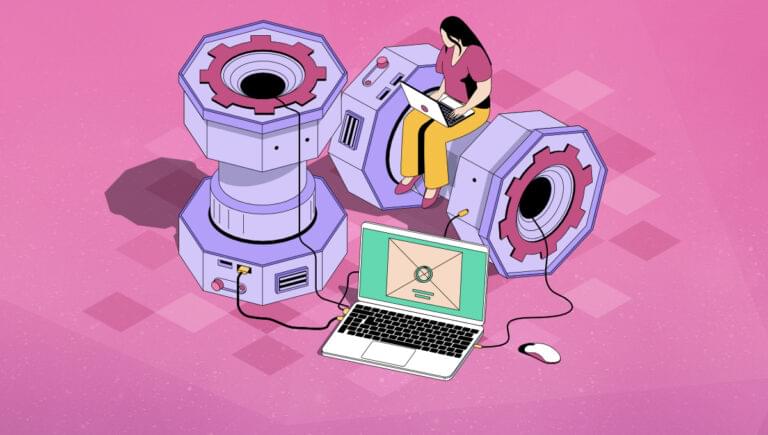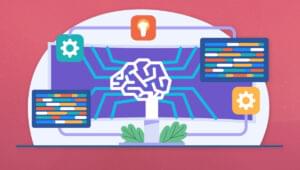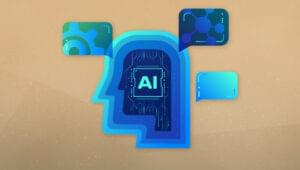
In this article, we’ll look at how game developers can create deeper and more engaging game worlds by harnessing the exciting new capabilities offered by GPT-4.
Key Takeaways
- GPT-4, a highly advanced language-AI model, can significantly enhance game development by creating intelligent, non-playable characters (NPCs), generating human-like dialogues and designing engaging quests and missions.
- By integrating GPT-4 with machine learning algorithms, developers can generate dynamic content, continuously improve game mechanics based on user behavior and game activity, and create personalized experiences for players.
- Successful applications of GPT-4 in the gaming industry, such as Nintendo’s custom voice recognition system and Blizzard Entertainment’s dynamically evolving storyline, demonstrate the potential of this technology to create deeper, more immersive game worlds.
GPT-4 and Its Capabilities in Game Development
Game development is a complex process involving several different components, including programming, art design, sound engineering, and storytelling. One of the most critical components is creating intelligent, non-playable characters (NPCs) to make the gaming experience as engaging and immersive as possible.
General Pre-trained Transformer 4 (GPT-4) is currently one of the most advanced language-AI models worldwide, with a massive amount of natural language processing (NLP) power. GPT-4 can create text that’s so natural-sounding that it can be difficult to tell it apart from human writing. This makes it an ideal tool for video game development.
Creating Intelligent NPCs using GPT-4
To create a compelling gaming experience, NPCs must act intelligently and respond to player interactions in real time. NPC behavior such as decision-making, social interaction, and even facial expressions can be carefully crafted using GPT-4.
Creating a chatbot with GPT-4 that can interact with players is easy. The software is already pre-trained to perform NLP tasks such as prediction, classification, and syntax analysis. So it’s possible to develop an NPC that understands player voice or text commands, and which can generate responses that accurately reflect the player’s question.
Here’s a sample code snippet of an NPC utilizing GPT-4:
def generate_response(text_input):
# Run GPT-4 to generate the response
response = gpt4.generate(text_input)
return response
Integrating GPT-4 in Quest and Mission Design
In addition to NPCs, GPT-4 can also be used for quests and mission design. By training the software on an existing, in-game storyline and character interactions, it’s possible to create new missions, quests, and dialogues that feel natural and engage the player to the game world in unique ways.
We can create quest parameters or conditions, enemies, and rewards using GPT-4. For instance, we could create a mission where the player helps the king locate his stolen crown easily. Upon speaking to the king or another NPC, GPT-4 could generate a response that would advance the mission structure and engage the player further in the game world.
Enhancing Dialogues and Conversations Using GPT-4
GPT-4 can generate human-like dialogue, which, when used in game instances, can enhance character interactions, making them more authentic and realistic.
With GPT-4, it’s possible to create in-game NPCs that speak with nuance and variation depending on a player’s response. By pre-training the NPC with different dialogue options, all potential questions and responses can be accurately molded to the player’s expectations.
Here’s an example of how to utilize GPT-4 to design a dialogue system:
def start_conversation(npc_name):
# NPC introduction
response = npc_name + ': Hello there! What brings you to my shop?'
return response
def generate_response(player_input, npc_name):
# Concatenate NPC name and player's input
input_text = npc_name + ': ' + player_input
# Generate the response
generated_text = gpt4.generate(input_text)
# Append NPC name to the beginning of the response
response = npc_name + ': ' + generated_text
return response
Using GPT-4 for Character Customization and Personalization
GPT-4 can be used to create personalization experiences with the NPCs. By creating unique personality traits or character development that stays with an NPC throughout the game, a player can feel more invested in the game world.
For instance, creating personalized dialogue or effect triggering based on responses by the player can create more natural-sounding characters that appeal to a player’s individual preferences.
This code snippet demonstrates how to generate personalized responses based on user preferences:
def generate_personalized_response(input_text, player_preferences):
# Merge user preferences with the input text
merged_text = input_text + player_preferences
# Generate the response
generated_text = gpt4.generate(merged_text)
return generated_text
Implementing Machine Learning Algorithms with GPT-4 in Game Development
GPT-4 can be integrated with machine learning (ML) algorithms to generate advanced in-game features such as dynamic content and game analytics. ML models can analyze game data such as user behavior and game activity to modify and improve game mechanics continuously.
Here’s some sample code demonstrating how to integrate GPT-4 with ML models:
import ml_model
def generate_dynamic_content(player_input):
# Use an ML algorithm to analyze player input
player_analysis = ml_model.analyze(player_input)
# Extract relevant data from the analysis
player_keywords = player_analysis['keywords']
# Concatenate player keywords with NPC responses
npc_response = gpt4.generate(player_keywords)
return npc_response
Best Practices and Challenges in GPT-4 Integration for Game Development
When integrating GPT-4 into game development, several best practices must be followed:
- consistent use of NPC traits throughout the game
- frequent monitoring of the system’s performance to ensure the generated data is valid and not offensive
Challenges to integration involve ensuring that GPT-4 is rendering swift, accurate responses throughout the game while avoiding overburdening the system.
Case Studies of Successful Applications of GPT-4 in Game Development
Here are several cases of successful GPT-4 integration across multiple titles in the game development industry:
-
Nintendo integrated a custom voice recognition and chatbot system using GPT-4 to one of its best-seller AAA titles for its Nintendo DS console. The voice recognition system was able to comprehend over 1,000 unique phrases to keep NPC queries constantly changing and the gameplay fresh.
-
An up-and-coming indie company, Starfall Studios, integrated GPT-4 to create over 90 non-playable characters in their game Aurora. Each NPC was given nuanced dialogue options and unique descriptions, leading to a game that felt authentically populated.
-
RPG developer Blizzard Entertainment integrated GPT-4 in their hit title World of Warcraft to create a dynamically evolving storyline. GPT-4 generated in-game responses based on player choices, resulting in a more immersive and engaging environment.
Future Possibilities and Advancements with GPT-4 in Game Development
The continued evolution of GPT-4 and its future upgrades have unlimited potential for advancements in game development. The possibilities include:
- generating entirely new game AI characters through realistic text generation
- advancements in machine learning and NLP algorithm refinement to generate better game world content
- the creation of more realistic animations and facial expressions using GPT-4 to bring game characters even more to life
Conclusion
GPT-4 is an advanced AI tool with a limitless potential for improving the video game development experience. By creating intelligent NPCs, personalization experiences, better dialogues, and mission design using GPT-4, game developers can create deeper and more engaging game worlds.
With effective integration of GPT-4 and cutting-edge design, developers can deliver a thrillingly immersive experience that keeps players coming back for more.
Frequently Asked Questions (FAQs) about Utilizing GPT-4 for Game Development
What is GPT-4 and how is it used in game development?
GPT-4, or Generative Pretrained Transformer 4, is an advanced language model developed by OpenAI. It’s capable of understanding and generating human-like text based on the input it receives. In game development, GPT-4 can be used to create dynamic and interactive narratives, generate dialogues, and even design game levels. It can also be used to create AI characters with more realistic responses, enhancing the overall gaming experience.
How does GPT-4 differ from its predecessor, GPT-3?
While both GPT-3 and GPT-4 are language models developed by OpenAI, GPT-4 is an upgraded version with improved capabilities. It has a larger model size, which means it can process and understand more complex language patterns. This makes it more efficient in generating human-like text, making it a valuable tool in game development for creating more immersive and interactive gaming experiences.
Can GPT-4 be used to create entire games?
Yes, GPT-4 can be used to create entire games. It can generate game narratives, design levels, and create AI characters. However, it’s important to note that while GPT-4 can contribute significantly to game development, it doesn’t replace the need for human developers. It’s a tool that can enhance the development process, but human creativity and technical skills are still crucial in game creation.
What are the limitations of using GPT-4 in game development?
While GPT-4 is a powerful tool, it does have limitations. It can sometimes generate text that is nonsensical or irrelevant. It also lacks the ability to understand context beyond the input it’s given, which can lead to inconsistencies in game narratives or character dialogues. Additionally, GPT-4 requires a lot of computational resources, which can be a challenge for smaller development teams.
How can I integrate GPT-4 into my game development process?
Integrating GPT-4 into your game development process involves using the OpenAI API. You’ll need to send a series of prompts to the API, which GPT-4 will use to generate text. This can be used to create game narratives, dialogues, or even level designs. It’s important to carefully craft your prompts to get the most relevant and useful output from GPT-4.
Is GPT-4 only useful for text-based games?
While GPT-4 is particularly useful for text-based games due to its language generation capabilities, it’s not limited to these types of games. It can also be used in other types of games to create dynamic dialogues, generate AI character responses, and even design game levels.
How does GPT-4 contribute to the realism of games?
GPT-4 contributes to the realism of games by generating human-like text. This can be used to create realistic dialogues and responses from AI characters, making the game more immersive and engaging for players. It can also generate dynamic and interactive narratives, adding depth and complexity to the game’s storyline.
Can GPT-4 understand and generate languages other than English?
Yes, GPT-4 can understand and generate text in multiple languages. However, its proficiency varies depending on the language. It’s most proficient in English, but it can also generate text in other languages to a certain extent.
Can GPT-4 be used to improve game testing?
Yes, GPT-4 can be used to improve game testing. It can generate a variety of scenarios and responses, which can be used to test different aspects of the game. This can help identify potential issues and improve the overall quality of the game.
What is the future of GPT-4 in game development?
The future of GPT-4 in game development looks promising. As the technology continues to improve, it’s likely that we’ll see more advanced and creative uses of GPT-4 in game development. It has the potential to revolutionize the way games are developed, making them more immersive, interactive, and engaging for players.
Mark Harbottle is the co-founder of SitePoint, 99designs, and Flippa.







